Huawei Mate 10 Pro vs. Mate 9 camera shootout
Huawei announced its highly anticipated Mate 10 series on Monday and new phablets will launch soon with new design and may upgrades, but the so-called artificial intelligence a.k.a. machine learning got most of the spotlight.
Yet, the Mate 10 and 10 Pro have an updated Dual Camera powered by Leica and Huawei. It uses the same sensors as the Mate 9, but those sit behind brighter f/1.6 lenses. The camera app has also learned some new tricks - using the new NPU inside the Kirin 970 chip it can identify up to 14 different scenes and automatically adjust the parameters to produce better pictures. The deep learning algorithms should improve the quality of the hybrid digital zoom and the variable aperture shots.

So, both the Huawei Mate 9 and Mate 10 Pro come with dual-camera setups packing a 12MP color and a 20MP monochrome sensors. They benefit from a 4-way focusing tech with laser AF, depth detection, contrast-detect AF and phase detect AF.
The Mate 9 sensors come with f/2.2 lenses, while the Mate 10 Pro ones have f/1.7 apertures. And the rest is all up to the software tricks, more or less.
We've decided to make a quick shootout around Munich between the new and the old Mate and see if there is a big difference or not. We snapped a bunch of photos that you can now compare.
Daylight samples
We began our shootout with some daylight samples. While both devices produce equally lively shots, there are some noticeable differences.
For starters, the Huawei Mate 10 Pro does better with high-frequency detail - the grass and tree leaves are better defined, with more texture. It's not as great a difference as it might appear at first glance, though, as some of this is just artifacts from the excessive oversharpening.
The colors most of the time were close, but the contrast differed significantly between the two devices. The Mate 9 had arguably better dynamic range all the time, while the Mate 10 boosted the contrast too much in some scenes and it noticeably hurt the dynamic range.
In this case, the Mate 10 Pro wins in resolved detail over the Mate 9. The price paid is it went too aggressive with sharpening and there are visible artifacts all around.
The Mate 10 Pro captures more detail especially in buildings, but the lower dynamic range means some loss is observed in shadows and highlights. We are hoping this is an issue with our pre-production unit and its pre-release software, so we are yet to see how things will turn out.






Huawei Mate 9 12MP camera samples






Huawei Mate 10 Pro 12MP camera samples
Sunset samples
The day was coming to an end in Munich, so the samples to follow were shot at sunset. The Mate 10 Pro resolved mostly the same amount of detail in those samples, produced less noise while its dynamic range was on par with the Mate 9.
The Mate 10 Pro was also more accurate with the colors being somewhat more conservative with the yellow and orange hues.
While the images from both phones were great, the Mate 10 Pro showed noticeable improvement here.



Huawei Mate 9 12MP camera samples
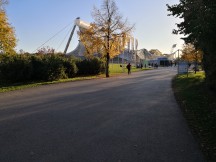


Huawei Mate 10 Pro 12MP camera samples
Low-light samples
The low-light scenes are where the brighter lens should make a difference. While the Mate 9 captures some fine samples, the Mate 10 Pro shoots at lower ISO and manages to keep the noise levels lower and preserve more detail at times. Yet again, the Mate 10 images suffered from lower dynamic range, but we'd still give them the edge here.



Huawei Mate 9 12MP low-light samples



Huawei Mate 10 Pro 12MP camera samples
Indoors samples
Just like with the low-light shots, the indoors one put the Mate 10 Pro a tiny bit ahead of the Mate 9 in some scenes. Its images are shot at lower ISO, exposed better, though sometimes the sharpening destroys fine detail - just check out the crops below where the excessive sharpening destroyed a lot of detail. There are no differences in the dynamic range - it's about the same as on the Mate 9.




Huawei Mate 9 12MP indoors camera samples


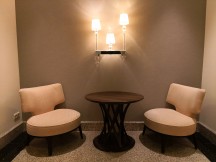
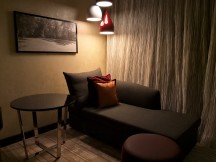
Huawei Mate 10 Pro 12MP indoors camera samples
Monochrome samples
The lack of color filter allows the monochrome snappers on both Mates to capture day and low-light samples at lower ISO, faster shutter, and with even more fine detail than the RGB samples. The Mate 10 Pro has the advantage of a wider aperture, which should give it an edge only in the low-light scenes.
Unfortunately, the Mate 10 Pro failed to impress here and the Mate 9 actually captured better shots. Whether it's a pre-production issue or not - we'll find out when our retail unit arrives.


Huawei Mate 9 12MP monochrome samples


Huawei Mate 10 Pro 12MP monochrome samples
Portrait mode comparison
Finally, we snapped some portrait shots, also known as variable aperture. The Mate 9 produced stronger bokeh effect at the same setting and it did marginally better with outlining the tree. The Mate 10 was the one with the more photographic bokeh effects, but ultimately it will be up to you to decide which one you like better.


Mate 9 Portrait mode • Mate 10 Pro Portrait mode
First impressions
Huawei Mate 10 Pro's camera is obviously a step ahead of the Mate 9's with brighter lens and thus better low-light performance. It captures more detail than the Mate 9's and sometimes understands the scenes better thanks to the new machine learning.
However, its output suffers from overly aggressive processing with strong contrast boost and excessive sharpening. We are hoping Huawei tones this down in the final software and it may end up with a real winner on its hands.
Related
Reader comments
- AnonD-709995
- 23 Oct 2017
- PIM
both captures look crap
- FinnishInquisition
- 22 Oct 2017
- m}I
It sure is an annoyance that Windows 10 doesn't handle DNG natively. It was fixed for me by downloading the Adobe DNG codec though. And if you use software like Lightroom and save the edited file down in a universal format of your choosing you'll ...








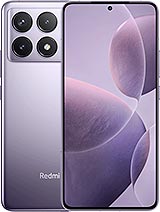 Xiaomi
Xiaomi Samsung
Samsung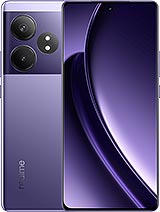 Realme
Realme Apple
Apple Apple
Apple


